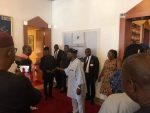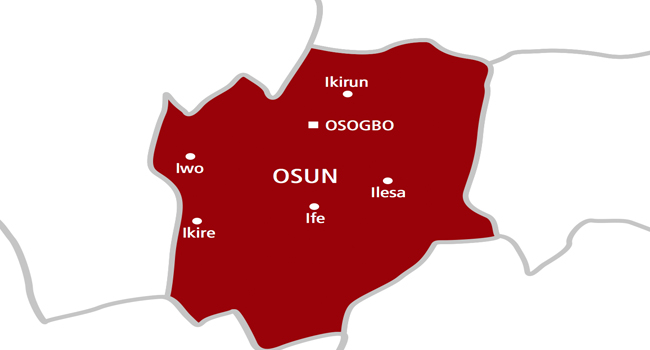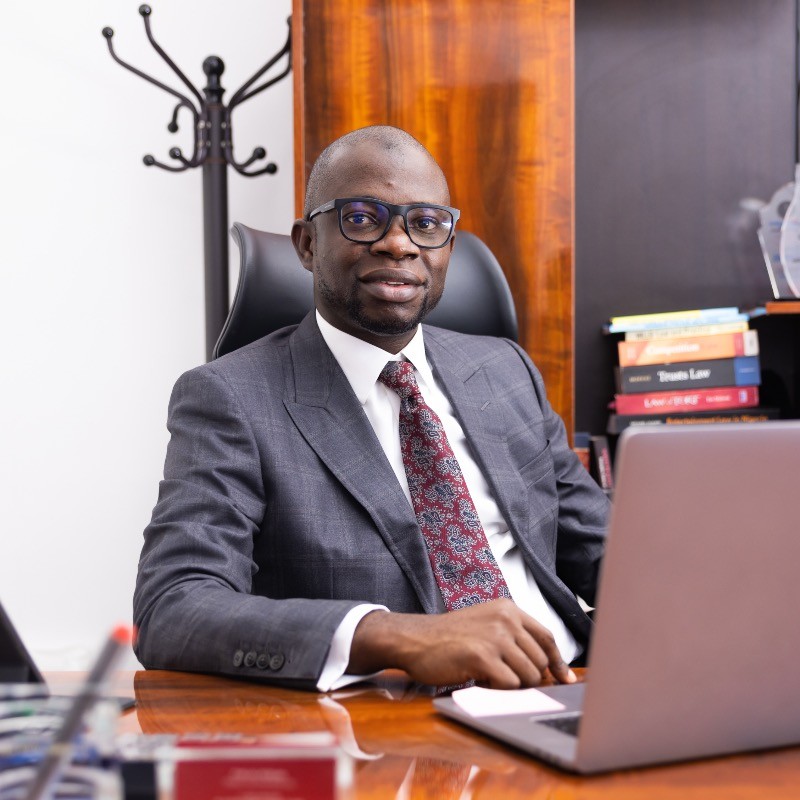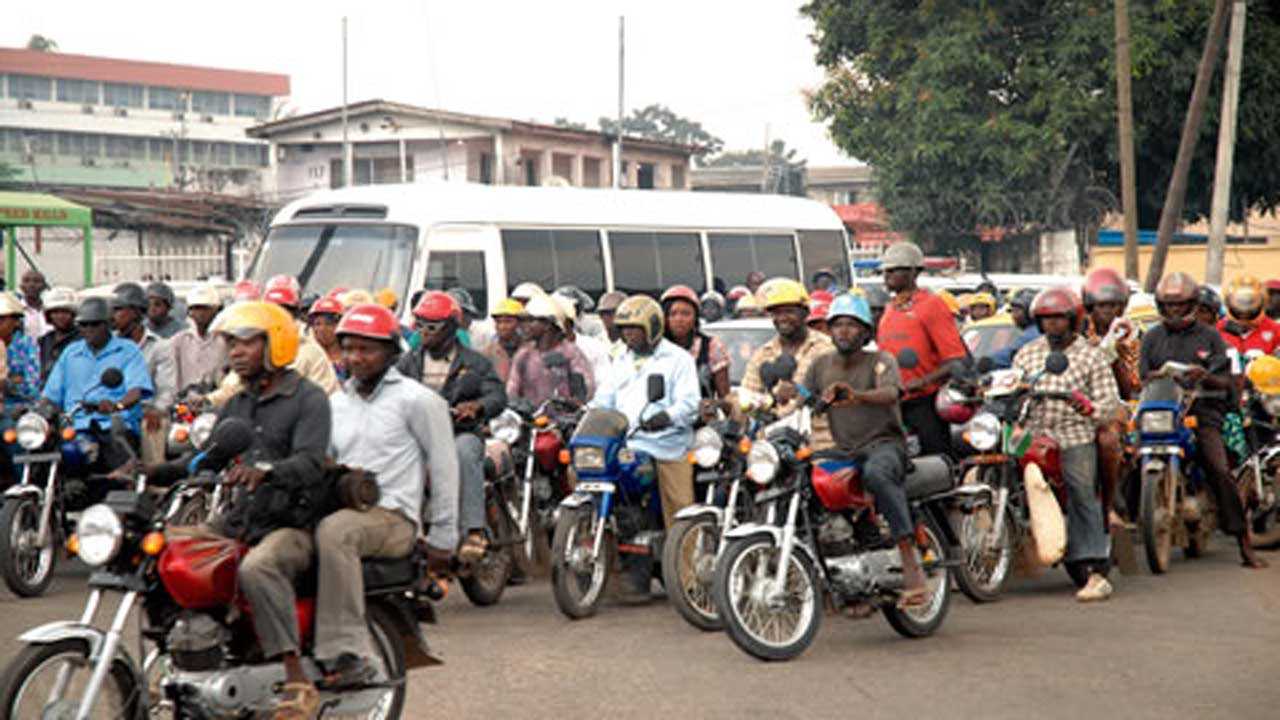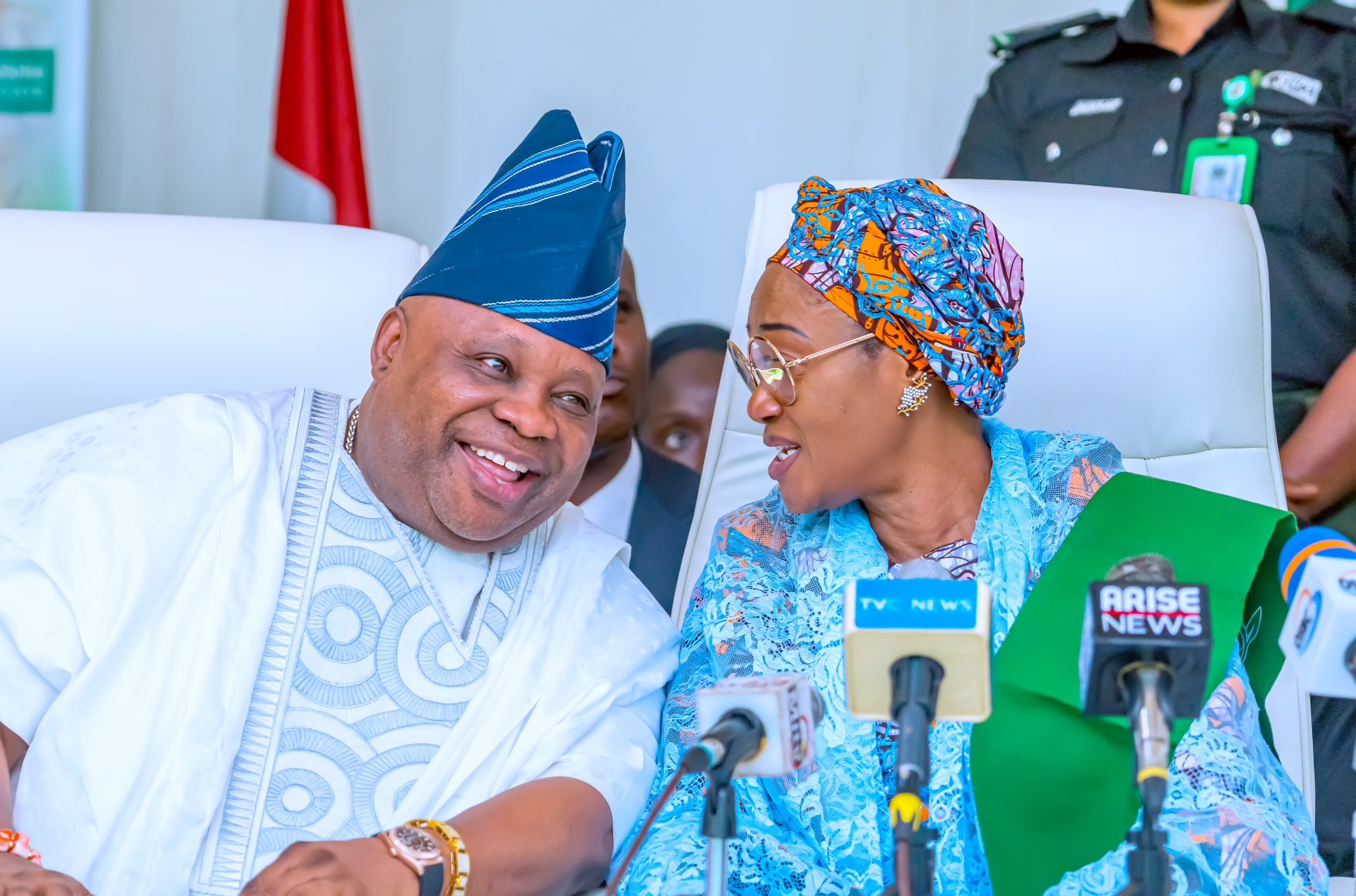The State of Osun has, within the space of the last ten years, been replete with monumental achievements in virtually all sectors. Of note in this regard is the Education Sector, which has witnessed massive transformation in terms of physical and human infrastructure, superstructure as well as programmes, policies and initiatives that have translated into shoring up performances of products at all levels within the sector. However, recent turn of events indicate recuse from and / or outright reversal of some of these laudable policies, which are laudable legacies of the Aregbesola administration in the state. OSUN DEFENDER Magazine weighs in relative terms the value of these policies, vis-à-vis the risk of getting them reverted or abrogated. Will this sudden reverse trend be in the best interest of the state, its teeming populace and the upcoming youths? NIYI OLASINDE probes.
THE present-day State of Osun, located within the precincts of the South-Western geopolitical zone of Nigeria enjoys rich historical antecedents in education in the Western sense. This has been much so that there was no village or clan that did not enjoy a good deposit of intellectuals. Areas captured by the present-day State of Osun have since time immemorial blazed the trail in producing experts in clerical / white-collar jobs and the professions. Even prior to the era of Independence in Nigeria, the people’s love, zeal and zest for Western Education had been high and commanding of covet. Down the line of history since independence, the trend has been on the increase. The free education programme of the defunct Western Region in the 1950s, corroborated later by the Universal Primary Education (UPE) of the military era between 1977 and 1979, led to large rise in schools’ enrolment.
The icing of the cake to the historical trend was the free education policy of the civilian administration of the defunct Unity Party of Nigeria (UPN) in the South-West during the Second Republic. Being a subset of the area that was then known as Oyo State, the state benefited such that elaborate numbers of schools with impressive enrolment figure was domiciled by it then. One of the two Federal Universities in the old Oyo State was also on its soils; not to talk of two polytechnic campuses, two colleges of education and huge presence of education institutions at the elementary, secondary and technical levels. This is not to talk of institutions in the category of middle level health and technological categories. These are all clear pointers to the claims laid to the fact that Osun had rich history of a frontliner in the field of education in these parts of the globe.
The events that played out up till the period of Nigeria’s return to democratic rule in 1999 was not too palatable to Nigeria and our various states in all sectors. At those periods, the people groaned in pain under successive military regimes; hoping to find and embrace enduring democracy at some date. This prayer got answered in 1999, as an administration, which was in all ramifications people-oriented took over the reins of governance in the State of Osun. The Alliance for Democracy (AD)-led administration of Chief Adebisi Akande started well on the Free Educational cardinal of progressive governance. Schools’ enrolment suddenly began to surge up again. Akande reintroduced the free textbooks / notebooks distribution of the old era and education began to get a fresh breath of life. However, that administration was not destined to last, as 2003 recorded a switch and a shift. As it turned out, this shift truncated a great development trend kick-started by the progressives and also got it retrogressed. The retrogression of almost eight years, spanning 2003 to 2010 was almost of five decades in its effect, weight and gravity. Later discussions will reflect the facts and figures behind this position.
WHEN in 2005, Ogbeni Rauf Aregbesola came out
with his Six-Point Integral Action Plan for the
State of Osun, some people, among who pessimists were top-ranking, felt that he was on a wild-goose chase. Some even expressed impossibility at the apparent tallness and non-attainability of his ideal programmes. Aregbesola’s intervention came in at a time when the state was desirous of a saving grace from imminent collapse; not only in education but in virtually all aspects of life. As a young state of almost 15 years, the State of Osun was already descending from a pseudo climax. Aregbesola saw the need in good time to arrest this needless and unwarranted decline, and he rolled out his intervention measures to meet the people at their most crucial points of need. The Six-Point Integral Action Plan was intended to:
- Banish Hunger
- Banish Poverty
- Banish Unemployment
- Promote Healthy Living
- Promote Functional Education
- Promote Communal Peace and Progress
It was in consummate recognition of the power of education and the development of human intellect infrastructure that Aregbesola accorded topmost priority to education. Throughout his entire eight-year administration which comprised two tenures, education ranked high, next to infrastructure in his priority. The revelation that led to this was not obtained from rocket-science or from some fiction. It derived from the discovery of the actual need of the moment, as a matter of exigency.
As analysts and observers prior to Aregbesola’s assumption of office, had observed through his period in office and as living witnesses to events as at date, we should be fair enough to state clearly that education was in a total condition of collapse when Aregbesola assumed office on November 27, 2010. Being in a total state of disarray and disrepair, there was urgent need to bring intervention to bear on the bad shape of things as at then.
Aregbesola inherited from the previous administration a backlog of examination fees of students of public schools who wrote final year public examinations with the West African Examinations’ Council (WAEC) and the National Examinations’ Council (NECO). On this premise, the two examining bodies were threatening fire and brimstones and were hell-bent on withholding results of candidates of public schools who were entered for and sat the examinations under the auspices of the State Government. This was the first challenge that Aregbesola administration was confronted with in office. Upon the settlement of the fees, the results obtained by candidates from the state in the examinations were neither heart-warming nor cheering!
In addition to this, it was becoming increasingly difficult for products of the state’s public schools to secure admissions into various institutions of higher learning, thus they were getting halted transition; leading to high rate of schools dropout. As a matter of fact, only about 16 per cent of school leavers from the state at the time were matriculable into institutions of higher learning. Aregbesola’s victory at the Federal Court of Appeal and his attendant emergence as helmsman of the state came at the very apt and apposite time. Thus was so in the education sector for a number of reasons. The factors need to be recast so as to serve as reminder to those castigating the policies under review. Those policies came by as necessary measures: a set of desiderata put in place to save the rot and decay in the sector in those days.
PRIOR to Aregbesola’s intervention in the education sector in the State of Osun, there were all manners of regimes of school fees as multiple authorities existed within the state and the ruling Peoples Democratic Party (PDP) cabals. There was acute shortage of teachers and other school personnel; with excess concentration of teachers at urban areas of the state at the detriment of rural areas which are in the majority. There also was the problem of confused standards as various kinds of teachers under various aegis existed in form of part-time arrangement. The Parents/ Teachers’ Association in particular intervened in the recruitment of some numbers of auxiliary hands. Helpful as this might had been, it was bereft of any regulatory standards, either from the Ministry of Education or Teaching Service Commission of Education Boards.
There were lots of defect in schools’ management, funding, supervision and control during the holocaust years under reference, that is, the years preceding the Aregbesola’s years. All manners of fees were collected from pupils, students and their parents / guardians The situation might have been part of forgotten experience now that the state and its people have heaved a sigh of relief for an upward of a decade. But for the purpose of a reminder, parents, guardians and other stakeholders were fervent in prayers for lasting rescue to come their way from the locust, weevils, caterpillars and cankerworms that nearly devoured them to the marrows during those dark days. Schools, as of the period, were mostly dangerously dilapidated. The environments were unbefitting and non-dignifying. Pupils and students relied on their parents’ provision (which was often meager) for virtually every need for effective learning. Thus the parents and guardians provided furniture in forms of desks and chairs, chalk to teach with, textbooks and notebooks, and other things like hoes and cutlasses. School uniforms were exclusive responsibilities of parents over-yoked with financial burdens. As a result, the uniforms became an eyesore. Of a truth, no one that was truly progress-minded would be happy or proud to identify with the state during those dark, old days.
On the whole, the years preceding Aregbesola years were periods of almost total casting down for education in the State of Osun. Coming on board the governance and service in a state such as we had then, one would not have settled for none else measures than those that would offer saving grace and rapid rescue. Aregbesola’s education intervention measures therefore came as a child of necessity. They were timely and timeous; hence, it was their adoption which led to the tremendous improvement witnessed in the sector till date. As it was at the time, the state was nose-diving in performance. Aregbesola infused life into the state in all spheres.
Proof and evidences abound to support the earlier claims of derelict state of the education sector of the holocaust years. Of sterner stuff is the evidence that shows the world of improvement which the efforts of the Arebesola administration brought to bear on the education sector in the state. Prior to 2010 / 2011, the performances of public schools’ candidates at external examinations were so woeful that between 2006 and 2010, the percentage of success staggered between 10.91 per cent and 15.68 per cent, which was the maximum for the period. The surge recorded between 2010 and 2011 was from 15.68 to 21.90 per cent. Progressively since 2011, the rate shot up increasingly from 21.90 (2011); till it reached 44.59 (in 2017). The year with least performance all through the Aregbesola years was 2014 with 18.55 per cent, whereas it rose to as high as 46.30 per cent in 2016.
State of Osun Students’ Performance in WASSCE 2006-2017
YEAR TOTAL CANDIDATES NUMBER %
2006 37,428 4,085 10.95
2007 36,171 2,483 6.86
2008 37,715 3,813 10.11
2009 39,676 5,545 13.98
2010 43,216 6,777 15.68
2011 53,293 11,672 21.90
2012 52,463 11,431 22.24
2013 47,009 9,654 20.54
2014 47,686 8,844 18.55
2015 49,845 10,590 19.49
2016 36,678 16,983 45.47
2017 32,488 14,487 44.59
THESE results were not attained
through tea-parties or victory
dances round town. They came as a result of meticulously planned and well-implemented strategies. These strategies unfortunately are now subjects of debates as to whether they should be reviewed, revoked or abrogated outright. The truth about the standing policies in education in the state is that they came about as a result of established needs and necessities for the state and its people, as such; they were adopted in the best interest of the generality of the people of the state. Most unfortunately, these fond policies are suffering horrendous knell, not in the hand of opposition but a government from within the fold of All Progressives Congress (APC). Appointing an 11-man Committee to review the education policies of the state could not have been an entirely bad idea, if the intent was to build on them and consolidate on the achievements to attain greater and loftier grounds from where the administration ended.
Let truth be told, the Aregbesola administration in the State of Osun was a solid resource which left laudable achievements in all sectors of life in the state the education landscape in particular. OSUN DEFENDER Magazine is of the opinion that these are laudable imprints which should not be allowed to suffer let nor neglect. With the submission of the reports of the eleven-man Education Policy Review Committee chaired by renowned Professor Olu Aina, Governor Adegboyega Oyetola ia cautioned not to jettison what represents great, laudable, impressive and giant strides in the policies.
If, as Oyetola claims, the proposed review cum reversal would be done in the best interest of the generality of the people, the governor should be reminded that those policies were first enthroned in the best interest of the state and its people. The Governor should also be reminded that as the key player and engine-room of the immediate past administration in the state, he should retain the pride of being instrumental to those policies and retain them with much the same sense of belonging, contribution and pride.
I just read a piece where it was suggested by a commentator that the present problem could be that Mr. Governor had begun to view some of those policies as errors in the making. The sad part of that comment was that the commentator questioned whether Mr. Governor and his choice were not part of those errors. These issues would have been averted if he had treaded the issues on ground with safe caution
THE achievements of the Aregbesola
administration in the area of
education are numerous and impressive. Introduction of single uniform for each level of public school’s ladder was a policy embraced in order to restore sanity and dignity to the public sector of education in the state. It is remarkable that single uniform system across schools is not entirely strange a policy. The entire defunct Western Region used single uniform in the days of late Chief Obafemi Awolowo. The practice subsists in all Francophone West African countries. Evidences also abound that in advanced United Kingdom, the practice thrives. The main grouse nursed against the uniform policy at the outset sprang from the fact that beneficiaries of the old varied uniform structure lost substantial earnings which they viewed as larger-than-life. The schools’ uniform policy was a child of necessity which came in time to save the state from the eyesore of wretched school child appearance. At its debut, the first sets of uniform were distributed free-of-charge. If subsequent pairs were sold at subsidized rates, it should not be viewed as loophole with which to castigate the Aregbesola administration. If the problem with the system is that of distinguishing one school from the other, badges, caps and berets and cardigans / blazers could be introduced to differentiate among various schools.
The Schools reclassification programme came up as a means of battling problems associated with uneven population distribution, acute shortage in numbers and quality of teachers across rural urban centres and redundancy owing to schools underpopulation. Instead of duplicating classes unnecessarily up to the sixth form in virtually all schools, the idea was to utilize what was available and add up what could be recruited in terms of number of teachers under the conditions of scarce financial resources. The National Policy On Education uses the 6-3-3-4 System of Education, where we have six years of elementary education, three years of junior primary education, three years of senior secondary education and four years of tertiary education. In the face of exigencies vis-à-vis paucity of funds, the 4-5-3-4 System was fashioned out to get the chunk of children in their most active stage of formative years under the five-year middle school arrangement with the best teachers under the most seasoned and well refined school climate. This was much more helpful later on as the Osun Elementary Schools Feeding and Health Initiative (O’ MEALS) became exclusive preserve for the children in the first four years of schooling in public schools. This brought convenience, administrative ease and lots of other benefits to schools and their managers under the system. Thus we have four years of elementary education, five years of middle school, three years of high school and four years of tertiary education. This system is a simplified version of 6-3-3-4 system. The last two years of elementary education is only merged with the first three years of secondary education to become middle school; while the last three years of secondary education is the high school component.
Viewed in other ways, the ultra-modern school structures put in place by the Aregbesola administration took adequate care of specific needs of people in communities around each school location; matching that with other components of need. As it stood, there should be no problems with this categorization, save for mischief and deliberate discontent. As for the names, the adoption of high school as opposed to grammar school, it is only more exact and proper to refer to the higher rung of secondary education as high school.
The coeducational policy of the Aregbesola administration should at this time and age be credited as best to assist the developmental needs of adolescents and young adults. In this age when social vices are rife and when maladaptive behaviours spread like wildfire, the school child require a coeducational environment to be able to accomplish the process of full dream realization with little or no emotional scars.
In copious cognizance of the surging needs in the sector, the Aregbesola administration made several appointments for competent and qualified teachers to shore up performances of students and make education more functional. This to a large extent was contributory to improved performances consistently recorded in public examinations over the years. The leading place occupied by some candidates of the state from public schools extraction in the Joint Admissions and Matriculation Examination (JAMB) came about resultant from an impressive combination of these efforts.
During the period under review, Aregbesola made teaching profession more professional and more attractive by appointing for each Senatorial District of the state a Tutor-General; a high-echelon government official in the cadre of Permanent Secretary. This came as an unprecedented trend in the annals of civil service in the country. Also, at the elementary school level, appointment was made for every Federal Constituency a Headmaster-General. Thus we had in all, three Tutors-General and nine Headmasters-General. These developments ushered in an era of new dawn for the teaching profession. Teachers became more greatly motivated, with the lucrative consciousness that they can aspire to rise to the peak of their career of choice.
It was one of the first steps taken by the Aregbesola administration, pursuant to the free, qualitative and functional education philosophy of the progressives, to make a drastic reduction in the tuition regime of the state-owned institutions of higher learning. What had existed prior to Aregbesola’s inauguration was an era of hike in tuition. This trend was reversed and all forms of discriminatory variations in tuitions and levies for non-indigenes were removed. Also, all indiscriminate levies and fees collected at will were abrogated.
The era preceding November 2010 was characterized by gross indiscipline and crass disorderliness in schools. Public schools had become completely broken down in discipline and structure. Issues of attendance and punctuality had become abhorrent and aberrant. Aregbesola came to the rescue by setting up a discipline corps which did meritoriously in stemming the tide of recklessness, hooliganism, brigandage and all forms of moral decadence which the schools of the time were characterized with.
Aregbesola built gigantic state-of-the-art modern, decent and befitting school structures at all levels of the education ladder; while those that could not be reconstructed outright due to financial constraints were rehabilitated / refurbished. The first saving grace provided by the administration was done through the timely identification and demolition of those school structures across the state which were dangerously dilapidated.
Aregbesola introduced e-learnig tablets known as Opon Imo which won international awards for the state.
The foregoing is a good chunk of laudable legacies left behind by the Government Unusual of Ogbeni Rauf Aregbesola. As part and parcel of that administration and its monumental achievements which were quite unprecedented in the annals of the State of Osun, the incumbent Governor, Mr. Adegboyega Oyetola is cautioned to focus more on jealously defending the preservation of these legacies, their consolidation and positive endeavours to build on them; rather than revision and / or outright abrogation.

